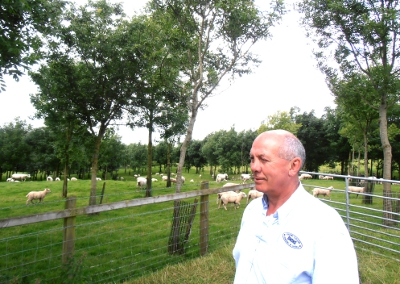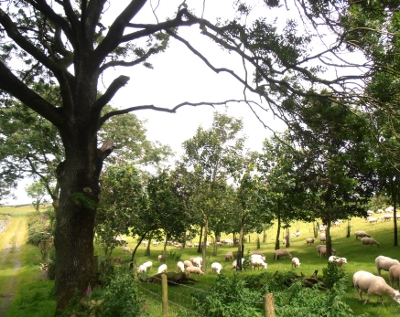Help, advice and funding can turn unproductive areas of farmland into woodland
While native woodland has served as a natural ally to farmers for centuries, today’s economic challenges spell out a growing need for more trees.
The Woodland Trust is geared up to help farmers and landowners experience the many benefits of native woodland and is offering advice on all aspects of woodland creation, including guidance on sources of funding.

Crosby Cleland – a prominent County Down sheep farmer, near the rural town of Saintfield – is one of an increasing number of landowners enjoying the fruits of tree planting efforts. Hundreds of trees – mostly ash – dot two hectares of less productive land on his farm, with the tree canopy providing shelter, shade and grazing for a large flock of ewes.
Crosby is no stranger to success. He was awarded the prestigious Farmers Weekly ‘UK Sheep Farmer of the Year’ in 2008, while a recent Ulster Grassland Society visit to his farm viewed it as an example of top class grassland management.
“I planted this area of land in 1997 with help from a DARD agroforestry grant, which at that time covered the cost of the trees’ establishment,” explained Crosby. “I now run 750 ewes on a total of 76 hectares of good grassland, but this was one spot you couldn’t put to the plough; it was non-productive.
“The leaf canopy is now meeting above the grass swards, and the shading doesn’t appear to have any adverse effect on growth. At the same time, the sheep can benefit from the shelter.”
According to the Woodland Trust, planting native trees – or allowing them to develop in hedgerows – provides winter shelter and summer shade vital for livestock welfare and productivity.
All farm animals are vulnerable to increased temperatures, which can affect feed intake, susceptibility to disease and reproductive performance. Heat stress may reduce conception rates of ewes and the fertility of rams; and newly shorn sheep must have access to shade as they no longer have the protection of the fleece. Conversely, shelter is an important factor in reducing the impact of cold weather. Tree shelter can help reduce pneumonia in cattle in winter and can help increase lamb survival rates.
Crosby Cleland has also been planting hedgerows on his farm over the last seven years and describes the thick hawthorn hedges as “not only invaluable shelter for sheep, but a wonderful magnet for insects and, of course, birdlife.” Vulnerable species sighted include the bullfinch, linnet and song thrush.
“I must say that my own experience of agroforestry has not only given me great satisfaction, turning otherwise less productive land into profitable grazing, but it’s also given me a real appreciation of the beauty of trees and their importance to our environment,” says Crosby. “I would encourage farmers to look at their least profitable land areas with a view to creating small plantations of trees.”
The Woodland Trust is offering farmers and landowners all the advice they need to get their planting underway. Funding is available from Forest Service’s Woodland Grant Scheme for planting half an acre or more. Individuals ineligible for government grant-aid can apply for funding via the Trust’s MOREwoods scheme.
To find out more telephone 0845 293 5689; email woodlandcreation@woodlandtrust.org.uk or visit the Trust’s website www.woodlandtrust.org.uk/farming

